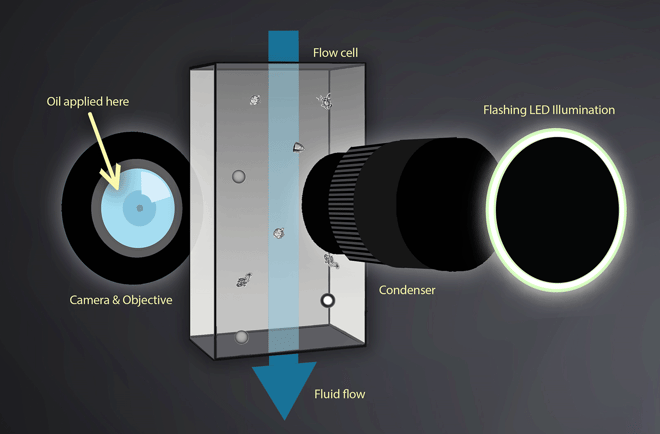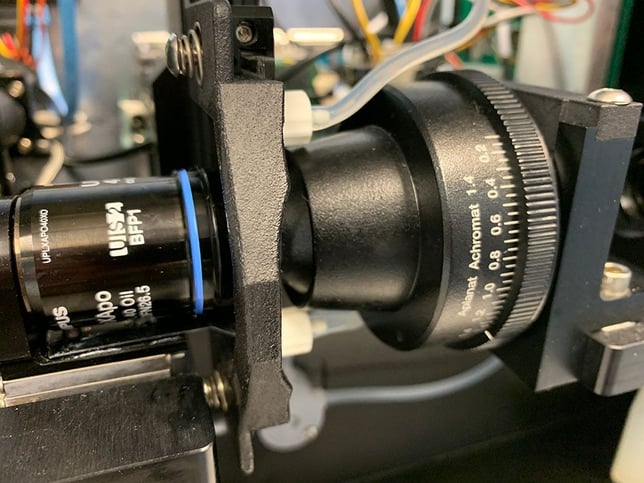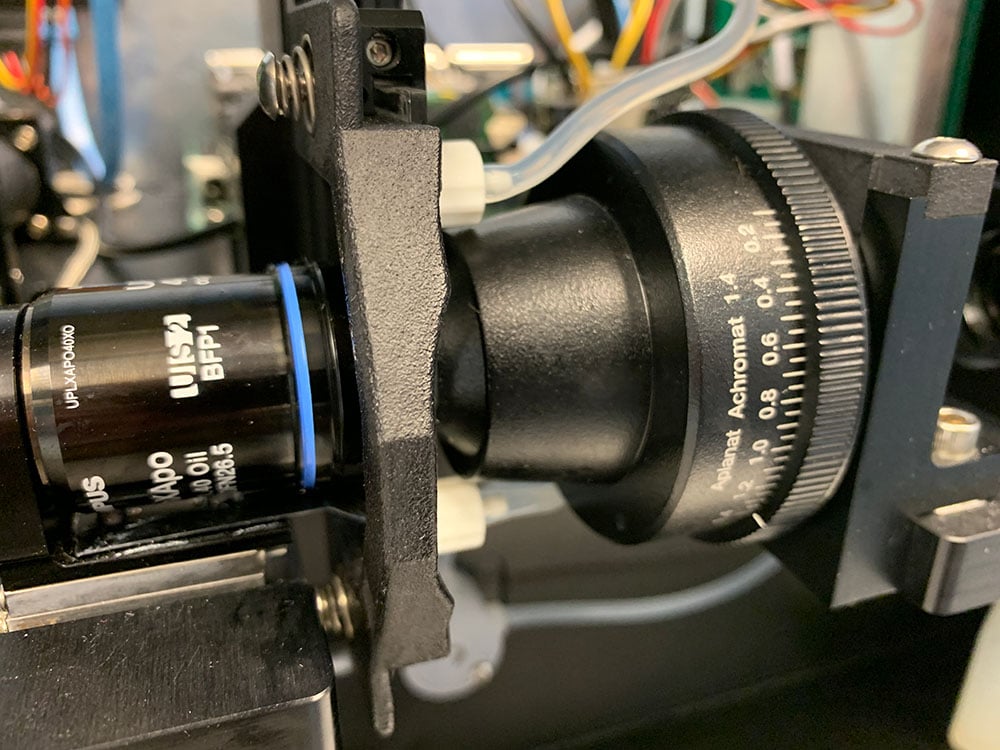In microscope systems, the numerical aperture and the wavelength of the light determine how highly-resolved the images will be (in the case of microscopy, "resolved" refers to the minimum distance between particles where they can be recognized as distinct from one another). When using Flow Imaging Microscopy to analyze particles under 2 µm, clear images, accurate sizing, and consistent categorization are crucial, and all depend on the numerical aperture setting.
 FlowCam Nano's internal components
FlowCam Nano's internal components
Numerical Aperture (NA) describes the amount of light that a condenser or objective can accept and transmit. For those familiar with photography, NA is similar to the f-stop value. In a camera, the f-stop setting controls the aperture (the diameter of the opening that exposes the film to light), allowing the user to control the depth of field and light intensity in the image. In a microscope system, the condenser gathers the light from the instrument's light source and concentrates it into a cone of light that passes through a slide or flow cell to illuminate the specimen before passing through the objective and being captured by the eye (or in the case of FlowCam, a camera). The angle of that cone of light, or NA, is changed by adjusting the diameter on the aperture ring of the condenser.
Flow Imaging Microscopy (FIM) uses the same principles as traditional microscopy but is optimized to provide sharp images of particles moving through a flow cell, instead of lying still on a slide. With FlowCam Nano, the NA of the objective is not adjustable, having been factory-set to provide sharp images, resolve at the correct depth, and allow optimal functioning of the instrument's paired software, VisualSpreadsheet.
The NA of the condenser (pictured below) is adjustable on FlowCam Nano and users may find it helpful to adjust the condenser's NA to its lowest setting in order to properly align the instrument components upon setup. However, leaving this setting below the NA of the objective (1.3 in the case of FlowCam Nano) restricts light to where it can no longer fill the objective. While it is possible to get enough brightness this way, the image will not be sharp, and VisualSpreadsheet’s ability to measure and categorize particles will suffer.
 FlowCam Nano's condenser, where the numerical aperture can be adjusted.
FlowCam Nano's condenser, where the numerical aperture can be adjusted.
Setting the condenser's NA higher than the objective's does not have any adverse effect. To get the best performance out of your FlowCam Nano instrument, keep the aperture dial on your condenser at or above the 1.3 value required by the objective when running a sample.
For more information on apertures and the terminology above, check out this article on resolution from MicroscopyU.com. To learn more about FlowCam Nano and FIM applications in the submicron size range, click the button below.











